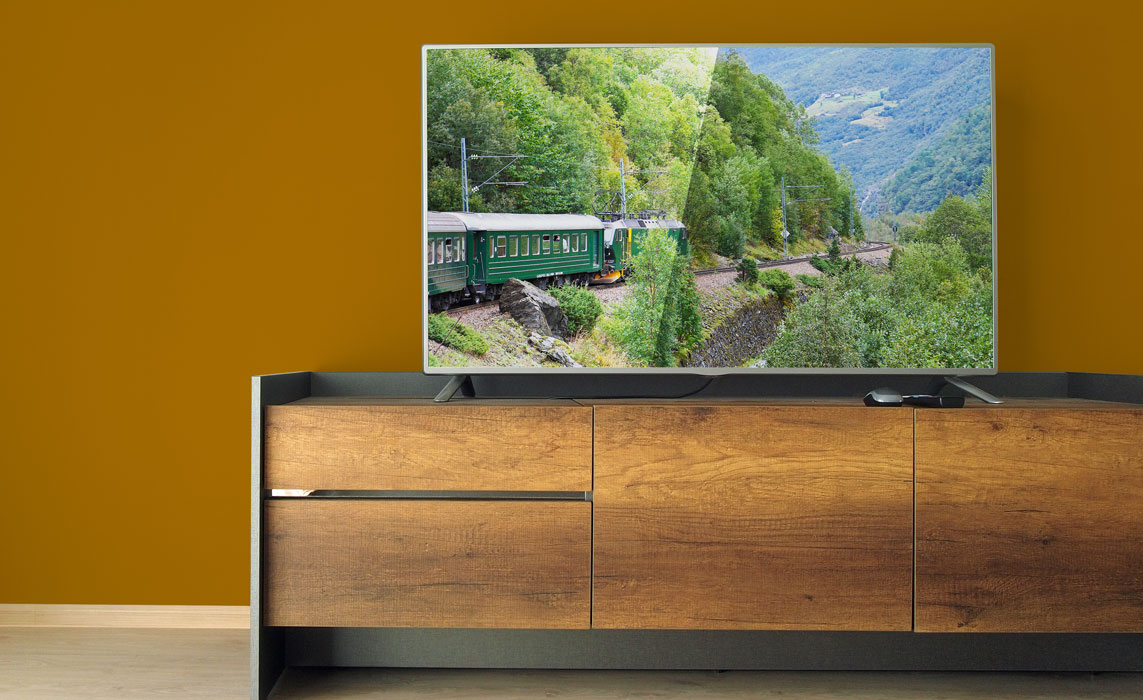
Take a Slow (and Healthful) Ride with Slow TV
How can something that’s addicting be good for you? It’s a concept that flies in the face of conventional wisdom, but a new style of television programming with origins in Norway is anything but conventional. It’s called Slow TV. As the name implies, it’s all about slow. And, yes, it can be quite addictive.
In this case, however, the addiction brings some potentially awesome benefits to those who fall into the lure. Before looking into all that, let’s tune in to Slow TV.
Isn’t TV Supposed to Be Fast, Loud and Full of Action?
A lot of TV programming, particularly in the United States, can be exciting and assaultive to the senses, mirroring the frenetic pace of our daily lives. Life in Norway is different. This is where Slow TV made its debut in 2009 when Norway’s public broadcasting system brought its viewers footage of a seven-hour train ride from Bergen to Oslo.
Several cameras took in the sights as the train sped through lush, snowy landscapes. And that was it. No actors, no artificial sounds, no titillating graphics — just the train rumbling through the icy countryside. An instant hit in Norway, plenty of episodes have followed, with marathon runs of logs burning (12 hours), shearing a sheep and then knitting a sweater from the wool (13 hours), and salmon fishing (18 hours). Then there was a cruise along Norway’s coast, shown in its blissfully boring entirety across 5 1/2 days.

Yeah, it’s boring — and that’s exactly what it’s supposed to be.
On a recent episode of CBS Sunday Morning, Thomas Hellum, who with Rune Moklebust came up with the idea, said: “Of course, it’s boring. Much of life itself is boring. But in between, there are some exciting moments, and you just have to wait for them.” Boring may be one word for it, but settling and relaxing and contemplative also come to mind. Add in the hypnotically addictive properties of viewing monotonous, gentle scenes hour after hour, and you begin to understand how the Slow TV format can produce some welcome health benefits.
Of course, it’s boring. Much of life itself is boring. But in between, there are some exciting moments, and you just have to wait for them.
- Thomas Hellum - Founder Slow TV
Getting Healthier by Getting Out of Yourself
Meditation in all its forms is really about one thing: shutting down what Buddhists call “the monkey mind” and entering a state where few, if any, thoughts intrude. The mind and its constant racket keep us in a state of stress to one degree or another. “Typical” television only increases the speed and volume of our thoughts and does nothing to settle us. Slow TV is just the opposite. It provides a peaceful, easy viewing environment with little to stimulate your mind.
While Slow TV probably won’t put you into a meditative state like that experienced by Tibetan monks, its settling effects may still be very good for you. Numerous medical studies have shown that regular periods of deep relaxation during waking hours may produce the following benefits:
- Lowered blood pressure
- Improved circulation
- Stabilized heart and respiration rates
- Reduction of depression and anxiety
- More energy and better sleep
- Relaxed muscles
- Better pain management
- Improved confidence and personal power
From Norway to the World
After seeing the huge popularity of Slow TV in Norway, videographers and producers in places like Hong Kong, Belgium, Australia and the United Kingdom began producing similar programming, usually under the original Slow TV moniker.
Now you can find Slow TV on major entertainment hubs, including Amazon and Netflix.
GoSlow is available on Amazon and features several seasons of programming, which includes slow footage of the River Thames in London and sweeping footage of nature and wildlife.
Netflix has a variety of Slow TV selections, from the original Bergen-to-Oslo train ride to all-day knitting shows, all-day firewood burning, fishing, other train trips and more.
Slow TV is also making a mark on YouTube, with hours-long programming of day flights over Switzerland, night flights over Tokyo, scuba diving, heavy seas, snow falling on a river, and a growing number of other choices.
So, when you have a little time (you don’t have to watch for 10 hours straight!), check out Slow TV. And if you find yourself becoming addicted, don’t worry. It’s good for you.






















